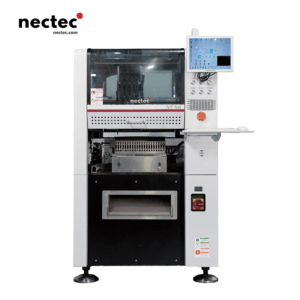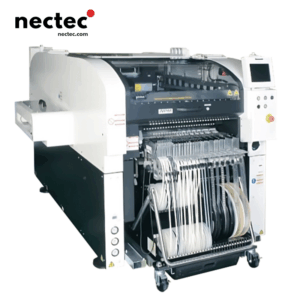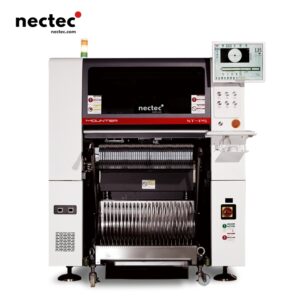In the fast-paced world of electronics manufacturing, efficiency and precision are paramount. As the demand for smaller, more complex electronics continues to escalate, the importance of advanced assembly technologies has never been more pronounced. One of the standout solutions in this arena is the mașină flexibilă PCB pick and place. This article delves into the operational mechanics, benefits, and the future of these machines in the electronics manufacturing landscape.
Understanding Flexible PCB Pick and Place Machines
Pick and place machines are crucial in PCB assembly, automating the placement of components onto circuit boards. Flexible PCB pick and place machines, specifically designed for handling flexible printed circuit boards, offer the adaptability required for modern electronics. These machines utilize advanced robotics, vision systems, and AI algorithms to ensure precise placement of components, accommodating various shapes and sizes.
Cum funcționează
The operations of a flexible PCB pick and place machine can be broken down into several stages:
- Hrănirea: Components are fed into the machine from a variety of sources, including reels, trays, or even bulk feeders, allowing for rapid access to materials.
- Inspecția vederii: Many machines incorporate high-resolution cameras that facilitate real-time inspection of the components and the flexible PCB, ensuring everything is aligned and in optimal condition before placement.
- Plasament: Using robotic arms equipped with vacuum nozzles, the machine accurately picks components from feed trays and places them on the flexible PCB with impressive speed and precision.
- Lipire: After placement, areas may be soldered using various methods, including reflow or wave soldering, securing the components in a durable and reliable manner.
Advantages of Using Flexible PCB Pick and Place Machines
Flexible PCB pick and place machines offer numerous advantages that contribute to operational efficiency, quality improvement, and cost-effectiveness:
1. Productivitate crescută
Automating the pick and place process significantly reduces the time and labor required for manual assembly. The speed at which these machines operate allows manufacturers to greatly increase output, meeting tight deadlines and rising demand in the electronics industry.
2. Precizie îmbunătățită
The sophisticated vision systems and robotics used in these machines ensure that components are placed with a high degree of accuracy. This minimizes alignment issues and reduces the risk of defects, leading to higher yields and ultimately better products.
3. Versatilitate și flexibilitate
Modern flexible PCB pick and place machines can handle a wide variety of components, from tiny surface mount devices (SMDs) to larger through-hole parts. This flexibility makes them ideal for manufacturers looking to adapt to changing product designs and technologies.
4. Eficiența costurilor
Despite the initial investment cost, flexible PCB pick and place machines can lead to significant long-term savings. By reducing labor costs, decreasing the rate of defects, and minimizing waste, these machines offer an excellent return on investment (ROI).
Applications of Flexible PCB Pick and Place Machines
The versatility of flexible PCB pick and place machines allows them to be utilized in various sectors, including:
1. Electronice de consum
As devices grow smaller and more multifunctional, the demand for flexible PCBs in smartphones, wearables, and other consumer electronics has surged. These machines enable rapid prototyping and high-volume production to keep pace with consumer demand.
2. Industria auto
The automotive sector increasingly relies on flexible PCBs for advanced electronic control systems, infotainment, and sensors. The precision and durability of components placed by these machines are essential in this high-stakes environment.
3. Dispozitive medicale
In the medical field, flexible PCBs are used in diagnostic tools, wearable health monitors, and implantable devices. The rigorous quality and reliability requirements in this sector make the accuracy provided by pick and place machines indispensable.
Viitorul mașinilor flexibile PCB Pick and Place
As technology continues to evolve, the future of flexible PCB pick and place machines looks bright. Innovations in AI and machine learning are set to enhance the capabilities of these machines, enabling predictive maintenance, smarter logistics, and data-driven operational adjustments.
Tendințe emergente
1. Mașini inteligente: The integration of IoT connectivity allows for real-time monitoring and data analysis, providing insights that can streamline manufacturing processes.
2. Învățarea adaptivă: Future machines may leverage machine learning algorithms to optimize assembly processes based on past performance and component behavior.
3. Sustenabilitate: As manufacturers become more environmentally conscious, the development of machines and manufacturing processes that reduce waste and energy consumption will be paramount.
Choosing the Right Flexible PCB Pick and Place Machine
For manufacturers looking to invest in flexible PCB pick and place technology, several factors must be considered:
- Capacity and Speed: Assessing production needs will help determine the required speed and capacity of the machine.
- Compatibilitatea componentelor: Ensure that the chosen machine is capable of handling the variety of components you plan to use.
- Ușurința de utilizare: A user-friendly interface and reliable support are critical to minimizing downtime and training costs.
- Asistență tehnică: It’s essential to partner with a supplier that provides excellent after-sales service and support to address any operational challenges.
In conclusion, flexible PCB pick and place machines represent a transformative advancement in the electronics manufacturing space. By offering enhanced precision, increased productivity, and adaptability to industry needs, these machines are setting a new standard for efficiency in PCB assembly. With ongoing technological innovation and a keen focus on sustainability, the future of flexible PCB pick and place machines is promising, ultimately reshaping how manufacturers operate and deliver products in an ever-evolving market.












